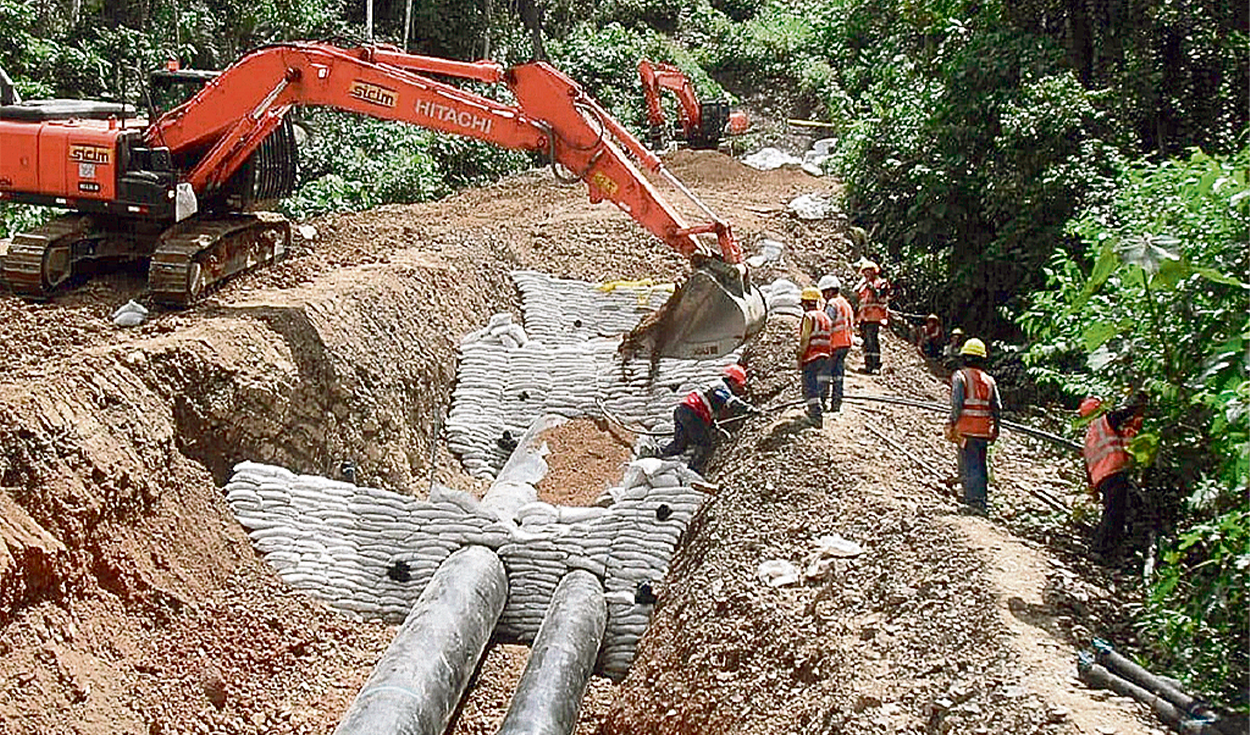
The Ministry of Energy and Mines (Minem) will promote this year the parallel construction of the Coastal Gasduct and the South Andean Gasduct (SIT-Gas) to integrate the so-called Southern Energy Ring, an infrastructure 3,797 kilometers long.
During his presentation at the CIP-CDLIMA Chemical Engineering Chapter Week, the minister Oscar Vera He said that both projects must be linked at some point to guarantee energy supply and security in that part of the country.
“We plan to develop the project SIT-Gaswhich was paralyzed by the political issues of the past, and now Our goal is to reactivate it to bring gas to these southern townsand also reach where diesel power plants in the energy node operate,” Vera highlighted.
With a planned investment of US$4,321 million, the SIT-Gas will have a cargo flow of 473 MMPCD through a 32-inch pipeline. Its extension will be 1,026 kilometers in the main network, and 981 kilometers in the regional branch. Until recently, it was not certain whether the Government would opt for its promotion.
“We are going to try to arrive with the SIT-Gas and also with another gas pipeline, called Coastal Gas Pipeline. Here, currently, the pipe reaches Marcona and possibly we are going to tender very soon for a petrochemical plant to produce fertilizers there,” indicated the head of Minem.
Among its advantages, according to Minem, is not only the supply to the southern energy node, but it would transport gas for a petrochemical plant in Mollendo or Ilo.
Coastal Gas Pipeline
In the case of the Coastal Gasduct, The estimated investment is US$1.2 billion for transportation of 350 MMPCD, through a 20-inch pipeline that will travel 500 kilometers. “The pipeline [Gasoducto Costero] will come to connect with the other [SIT-Gas], in such a way that we guarantee the supply in this area. That is what we have planned and we will report on this later,” he concluded.
Minem considers that it could be developed by the current concessionaire (Contugás) and, although it ensures “partial” supply in the southern node, it does not guarantee energy security nor does it transport gas for a petrochemical plant in Mollendo or Ilo. Furthermore, the supply would only reach Arequipa.
TGP, the only company that, at the moment, receives Camisea gas directly from the field, operates two pipelines: one of 730 km that carries the energy (NG) to Lurín, and one of 560 km that transports natural gas liquids ( LGN) to the Pisco Fractionation Plant.
Single natural gas rate, Minem’s bet
On the other hand, Minem will insist on the implementation of a single natural gas rate through the approval of bill 679, whose signature, previously approved in the Plenary, was returned to the Energy and Mines Commission of Congress last December.
During his presentation at the CIP-LimaMinister Vera remarked that One of the cornerstone objectives to achieve the massification of Camisea gas is to manage a single rate throughout the territory.
“We are working for the approval of bill 679, which creates a single national rate in order to encourage investment. What does this mean? With this law we are going to make gas cost the same in Huancavelica or Ayacucho, the same as in Lima,” said the minister.
Source: Larepublica
Alia is a professional author and journalist, working at 247 news agency. She writes on various topics from economy news to general interest pieces, providing readers with relevant and informative content. With years of experience, she brings a unique perspective and in-depth analysis to her work.











